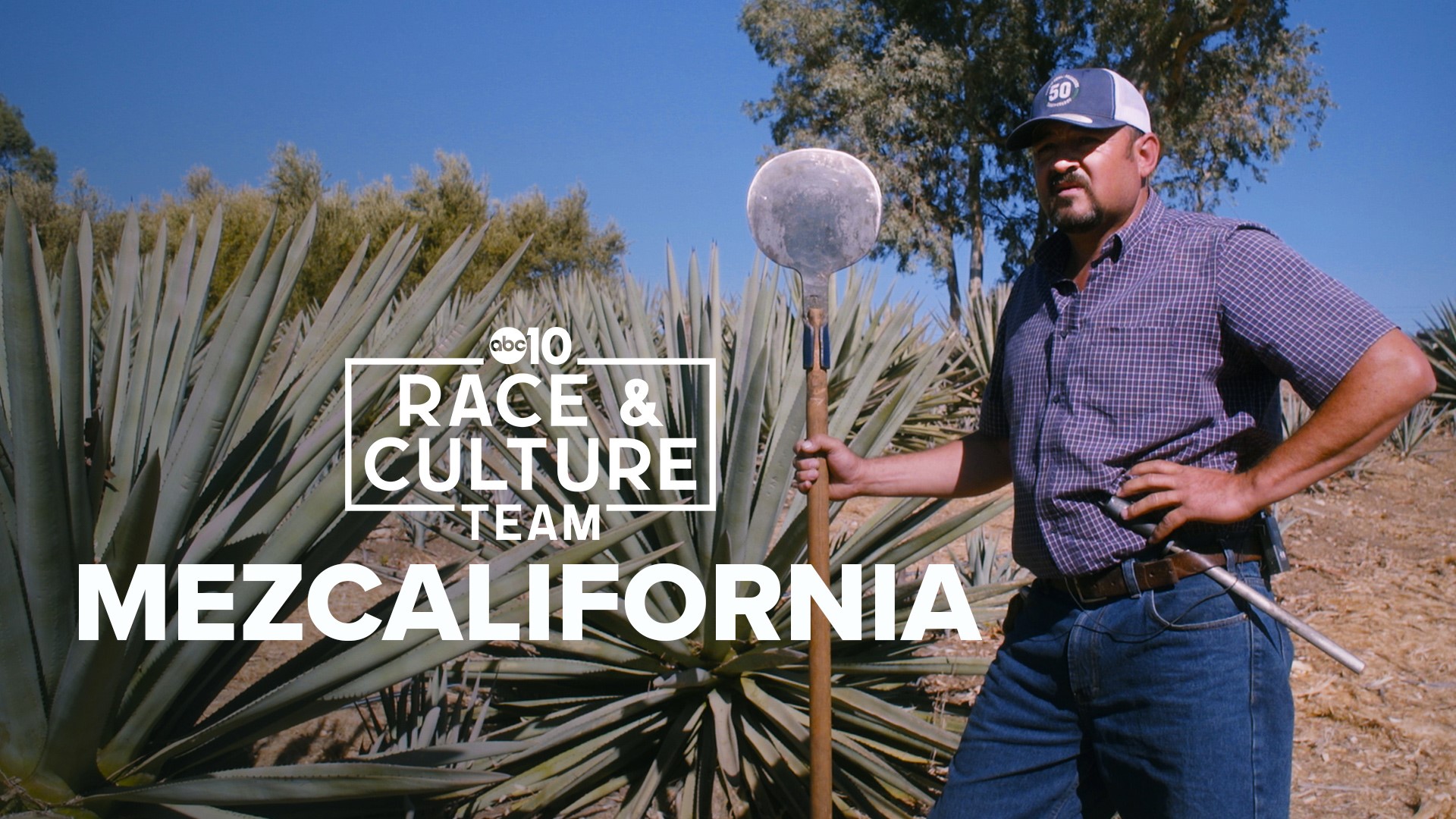CALIFORNIA, USA — As almond and olive harvest season comes to an end in Yolo County, there is one crop that just recently went to flower. The spiky-leafed plant is about the size of a shopping cart but the peak of its flowering bud can get upwards of 12-feet tall.
There’s no mechanical harvesting machine in California, at least not yet, that can easily process this plant. To remove it from the ground, Raul Chavez uses a sharp handheld tool and brute strength.
“Lots of labor. It’s hard; it’s all physical,” Chavez said, nearly out of breath.
The plant Chavez is manhandling is California-grown agave, the same plant Mexico uses to make tequila and its more refined cousin, mezcal. It’s one of the first successful crops of its kind in the Golden State, and a crop that takes seven years to mature.
“This field reminds me of my home,” Chavez said.
Around here Chavez is known as “Repo” because of the white cabbage-colored hair he once had as a kid. Chavez comes from a long line of jimadors, or agave harvesters.
At just 10-years-old, he was cutting agave with this brother in Tonaya, a small town in the Mexican state of Jalisco well known for its agave crops.
“I think something like 80% of the people with land put agave in over there. It’s a beautiful place, beautiful production,” Chavez said.
Unlike in Tonaya, agave is more of an experimental crop in Yolo County. An experiment that hobby-farmer Craig Reynolds hopes will be one solution to California’s never-ending struggle with water and farming.
“They like water, but they don’t need a lot. You can grow agave with a tenth less water than other cash crops,” Reynolds said.
Commercially-grown California agave has been a long-time dream for Reynolds. After retiring from his career spent at various state legislator’s offices, Craig decided to see if the drought-tolerant plant would grow in Yolo County.
“One of the beauties of having the agave industry in California is that we already have the workforce, the knowledge and expertise from the folks from Mexico,” Reynolds said.
That includes people like Chavez, who helped Craig plant several hundred experimental plants. A few years later, Chavez planted his own agave plot.
“Turns out this was a very viable project, and we made some excellent agave spirits,” Reynolds said.
Agave spirits is the name distillers in the United States must use when producing alcohol from agave.
“We can’t call it tequila because it’s not grown in the special five-state region for tequila, and we can’t call it mezcal because it is not grown in that 12-state region,” Reynolds said.
It may not be called tequila or mezcal, but Reynolds and Chavez proved they could make Agave spirits the traditional way. In a wood fired pit.
“When the fire is ready, put it in the pit. Cover it and wait for five days,” Chavez said. Heating the agave is the only way to extract the sugar needed for the fermentation and alcohol distillation process.
So far, lots of people are enjoying California agave spirits. Thanks to Reynolds' California agave dream and Chavez’ Mexican Agave experience, a movement is under way. A movement Craig calls 'Mezcalifornia.'
“Basically, the concept of having mezcal in California,” Reynolds said.
The Mezcalifornia movement is taking off. Reynolds runs a business called California Agave Ventures, LLC and distributed starter plants to several farmers across the state.
As for Chavez, he is expanding his own agave crop so he can carry on his Mexican agave roots.
“When I go back home, people say, 'hey, you are growing agave?' I say. 'Yes, a little bit.' It’s a good feeling,” Chavez said.
WATCH ALSO:

